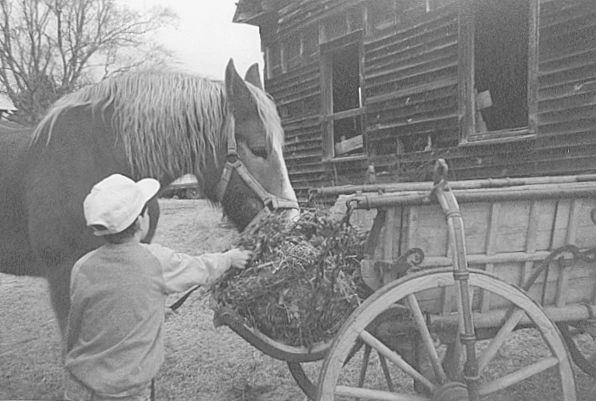That's what this place was, cut-over timber that has grown up over the years. When we first got it years ago, we would plant food plots here and there..and the dove field in it for years. The key, believe it or not, is it is almost half Kudzu. Most people probably don't know it, but Kudzu leaves test 24% to 26% protein. Roots and stems 16% or more. Hell, they sell Kudzu now at health food stores! And Corrriente thrive on weeds and briars and honeysuckle. Any grass on the place is Johnson grass and broom sage. with some volunteer wheat oats, rtc., from the dove field days. And Corriente don't need worming or fly control or any meds. We just turn them out and let them raise themselves. This summer I had those Plummer cows and my 2 1/2 Brahma heifers on it, and they did fine but it was just them and our 4 Corr heifers and the Corr bull on that 200+ acres. I doubt we could have put 120 of them, or any other kind, on that place without feeding them, though. The Corriente thing works best on land too poor or growed up for regular cattle. We never spent a dime on these other than some salt and minerals that we keep in the corral. And Corrientes don't have problems calving. I hear out west people even cross them with Charolais bulls. Me and Scott figured out we had about $20-$25K in the original 120 cow herd. Every year they would drop a calf that at 6 mos sold for more than you could buy their mommas for.. Often twice as much. We always used homozygous polled and black bulls and sold them at weaning....trailer weaned.. and they would bring what the other commercial Angus or black baldies 400-500 lbs brought. We would always turn enough bulls, usually 6, in with them at Easter and Memoerial Day weekend we'd pick them up and put in our Corr bull for cleanup. and get him out July 4th weekend. In this last crop they had all had black calves,( used 6 Ultrablack bulls) but some years we'd end up with anywhere from 4 to 8 or 10 Corr calves born in March. This is where we'd get our replacements, usually 1- 4 a year. And 1- 4 or so steers for fresh ropers.
If you have rough land you don't want to spend money improving and you do not want to spend time and money worming, vaccinating, etc, and don't want to be there everyday in calving season, and want to spend less than $500 a cow for your herd, then you can't make more money than you can with Corrs bred to Angus or Brangus bulls. After they all calved every February, we'd round them up and rope the calves, usually me, with Scott on the ground tagging and banding the bulls. And that was the extent of handling or working them til we rounded them up to load on a trailer to take to the sale.

